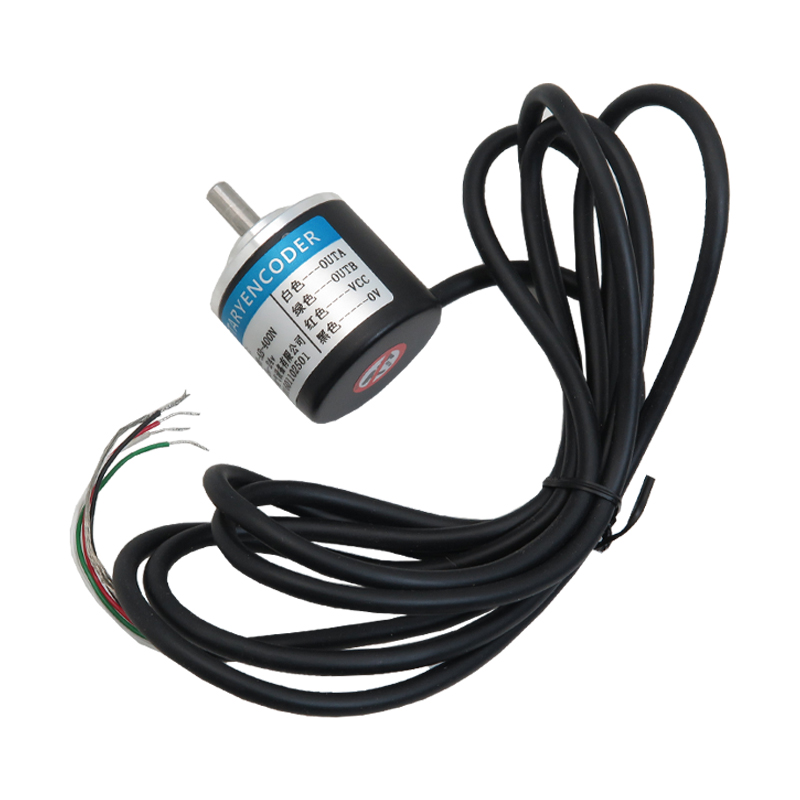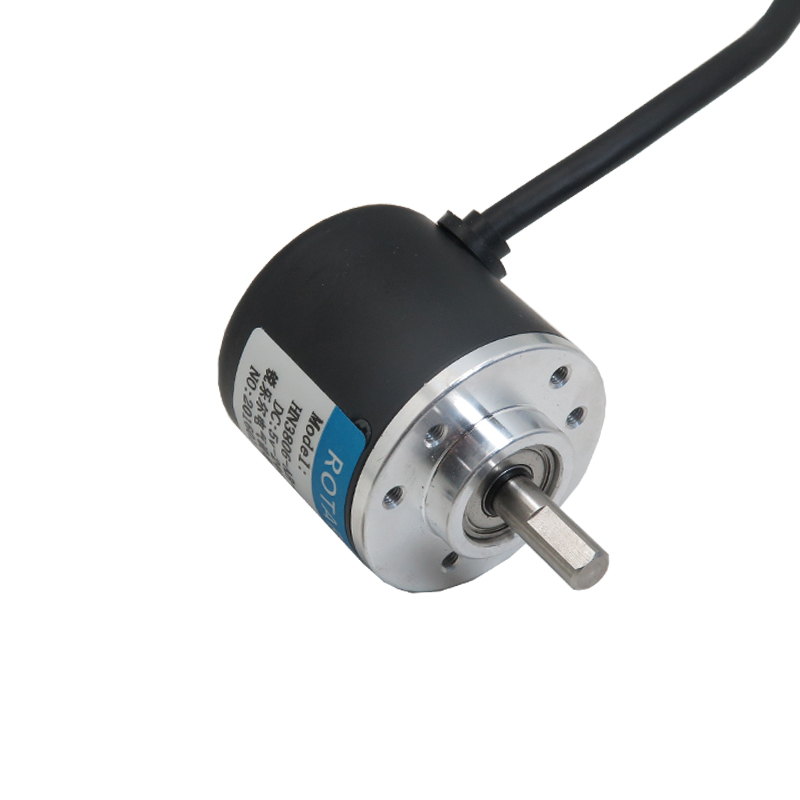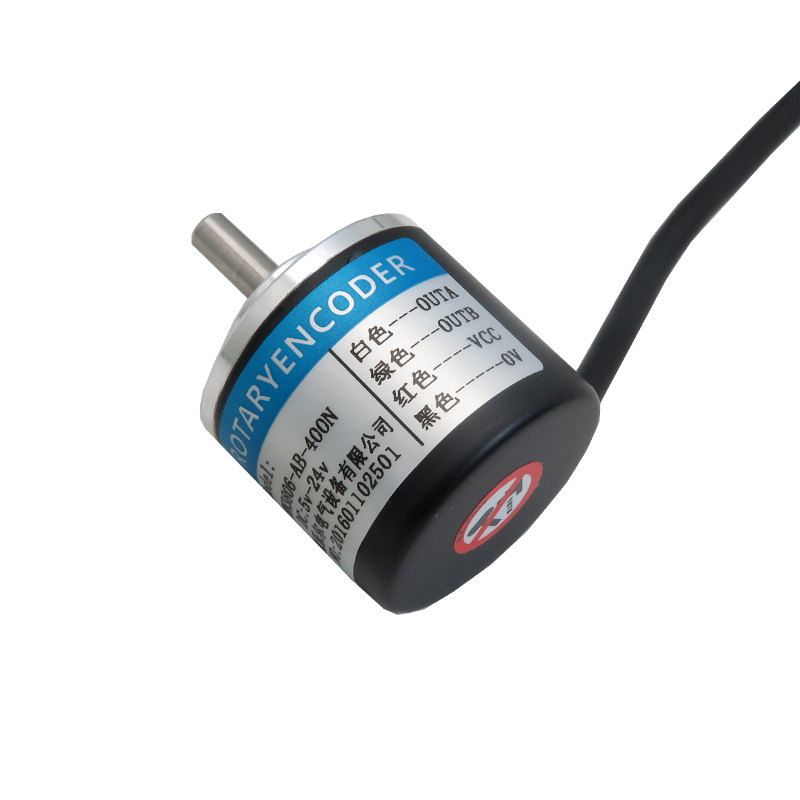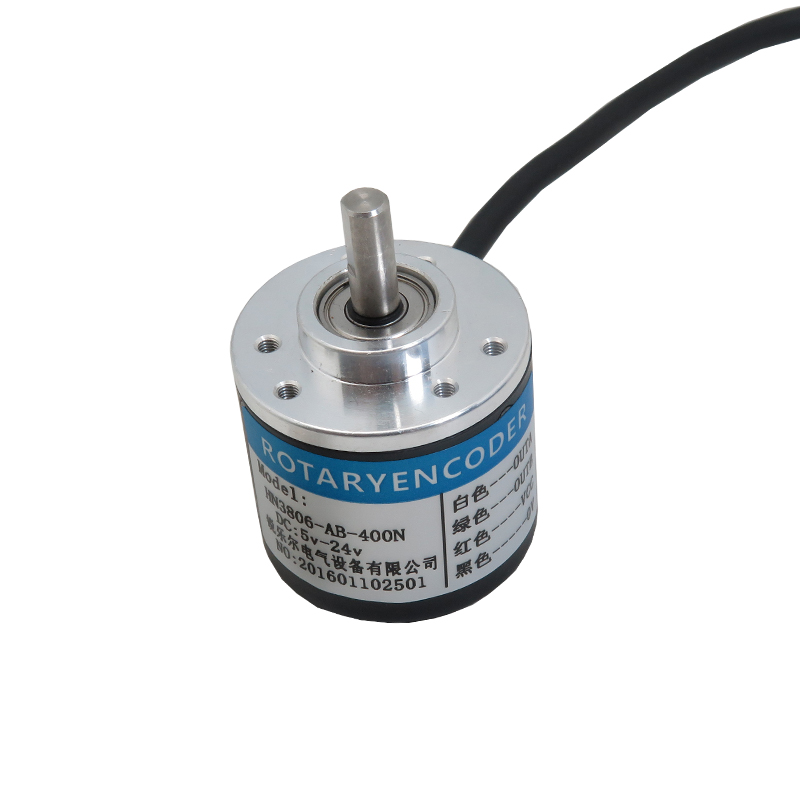822,830 تومان
کالا موجود استموجودی انبار : 34 عدد
علاقه مندان : -
وضعیت : فعال
تعداد مرجوعی : 0
دنبال کنندگان : 1 نفر
قدمت : 1 سال و 6 ماه و 25 روز
وزن : 149 گرم
کل فروش : 567 عدد
تعداد سفارش ها : 56 سفارش
هنوز هیچ رایی ثبت نشده است
روتاری انکودر نوری 400 درجه دو فاز مدل HN3806 8-24V
انکودرها تغییرات مکان(Position) و جهت (Direction) را به سیگنال های الکتریکی تبدیل می کنند. در واقع انکودر حسگری می باشد که به محور چرخ، چرخنده و یا موتور وصل می شود و می تواند میزان چرخش را اندازه گیری کند. با اندازه گیری میزان چرخش می توان جابجایی، سرعت، شتاب یا زاویه چرخشی را تعیین کرد.شفت انکودر (Shaft encoder) يک حسگر نوري است که یک حرکت مکانیکی (خطی و دورانی) را به سیگنال الکتریکی تبدیل کرده تا بتوان مشخصه های متفاوتی را از آن سیگنال مورد استفاده قرار داد، یا به طور ساده تر انکودرها وسیله ای هستند که حرکت دورانی یا خطی را به سیگنال دیجیتالی ۰ یا ۱ تبدیل می کنند.
البته ناگفته نماند که بعضی از انکودر ها خروجی آنالوگ (۰ تا ۱۰ ولت و یا ۴ تا ۲۰میلی آمپر) نیز دارند.
اتصالات:
سبز: فاز A، سفید: فاز B، قرمز: تغذیه VCC، مشکی: ولتاژ صفر
نکته:
خروجی دوفاز AB، نباید به طور مستقیم به VCC متصل شود در غیر این صورت باعث سوختن تریود خروجی می شود.
کاربرد روتاری انکودر نوری 400 درجه دو فاز:
- اندازهگیری سرعت چرخش اشیا، زاویه، شتاب و اندازهگیری طول
- کنترل طول برش در ماشینهای برش
- رباتهای مسابقات دانش آموزی
مشخصات روتاری انکودر نوری 400 درجه دو فاز:
- مدل: HN3806-AB
- تعداد پالش: 400
- منبع تغذیه: 24 ~ 8 ولت DC
- قطر شفت: 6 میلی متر
- قطر بیرونی: 38 میلی متر
- خروجی: مدار پالس 2 فاز AB، خروجی مناسب برای کلکتور باز NPN
- حداکثر سرعت مکانیکی: 5000 دور بر دقیقه
- پاسخ فرکانسی: 30 کیلوهرتز
- طول کابل: 2 متر
Description:
A rotary encoder is a type of position sensor which is used for determining the angular position of a rotating shaft. Encoders are used to translate rotary or linear motion (mechanical movement) into a digital signal, according to the rotational movement.
This is for the purpose of monitoring or controlling motion parameters such as speed, rate, direction, distance or position.
There are two main types of rotary encoder: absolute and incremental.
The output of an absolute encoder indicates the current shaft position, making it an angle transducer. The output of an incremental encoder provides information about the motion of the shaft, which typically is processed elsewhere into information such as position, speed, and distance.
Rotary encoders are used in a wide range of applications that require monitoring or control, or both, of mechanical systems, including industrial controls, robotics, photographic lenses, computer input devices such as optomechanical mice and trackballs, controlled stress rheometers, and rotating radar platforms.
Application:
It can be used to measure the rotational speed, Angle and acceleration of the object and the length measurement
Suitable for intelligent control of various displacement measurement, automatic fixed-length leather, Automatic guillotine machines, Steel length cut control, Civil measured height human scale, Students racing robots
Features:
Model: HN3806-AB
Number Of Pulses: 400
Power Source: DC 8-24 V
Shaft Diameter: 6mm
Outer Diameter: 38mm
Output: AB 2 phase output rectangular orthogonal pulse circuit, the output for the NPN open-collector output type
Maximum Mechanical Speed: 5000 R / min
Response Frequency: 30KHz
Cable Length: 2 Meter
Connection:
Green = A phase, white = B phase, red = Vcc power +, black = V0
Note:
AB 2phase output must not be directly connected with VCC, otherwise, it will burn the output triode, because different batches, and may not have the terminal.




